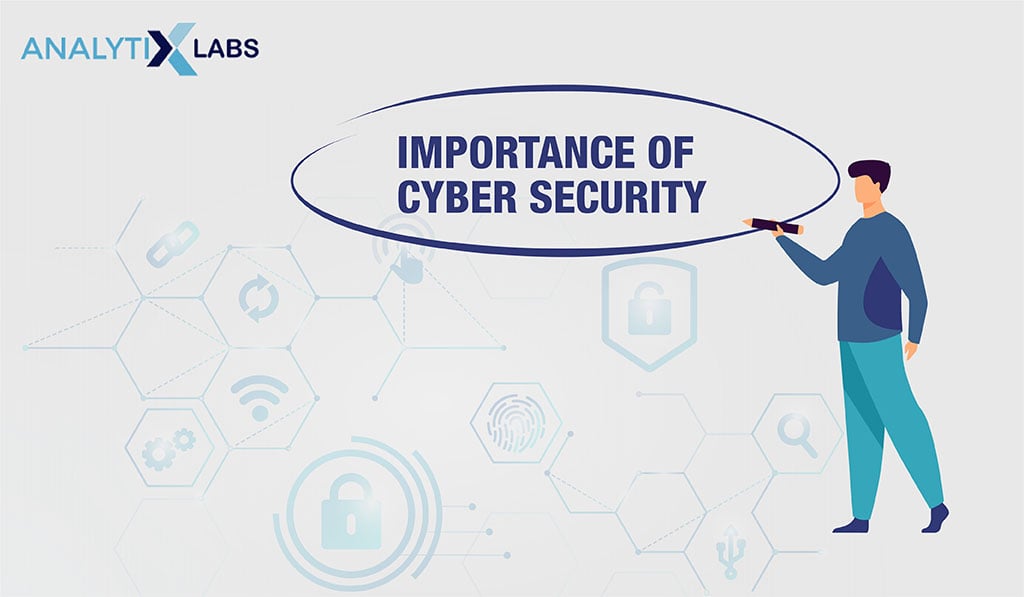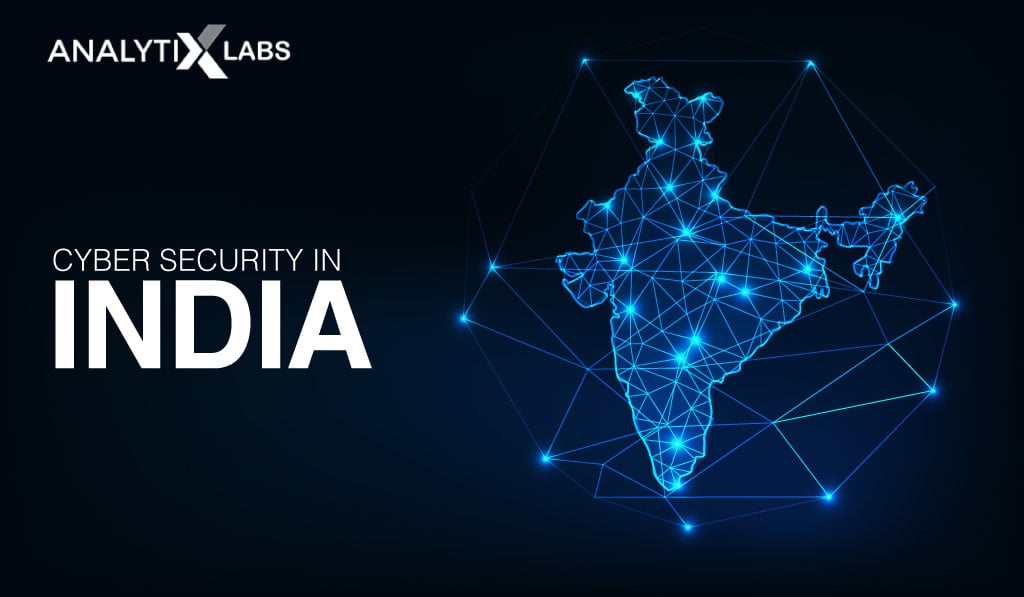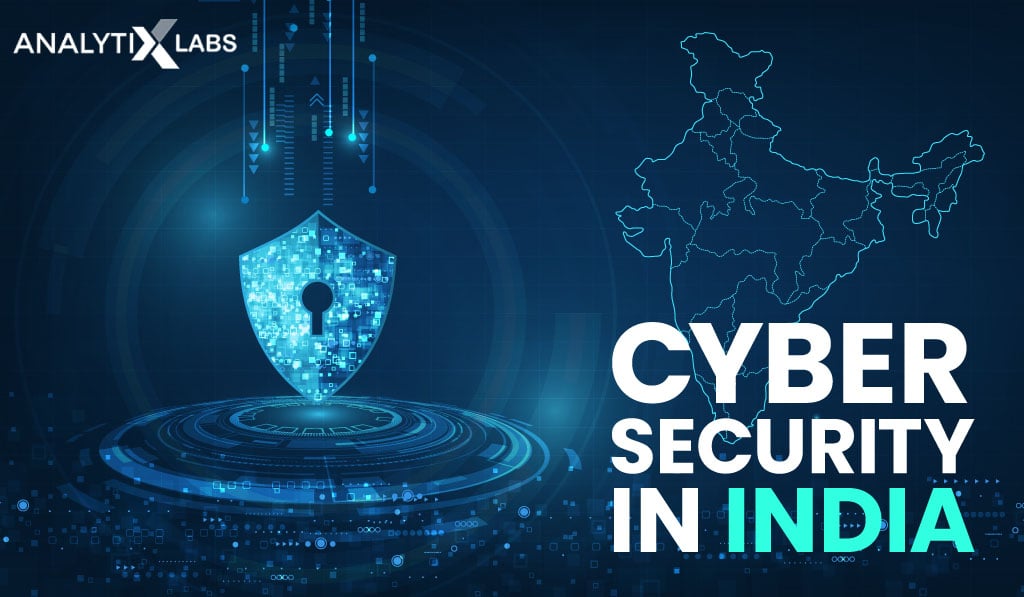In this article, we will cover the important applications of cyber security and the importance of securing cyberspaces. We will also touch upon the various challenges that cyber security faces and the different types of cyber security threats.
Introduction
Organizations are facing complicated problems when it comes to protecting their data and IT infrastructure. Owing to the massive rise of cybercrime, it is essential to implement good cyber security protocols and methods. Securing data, software, cloud systems, networks, and other digital assets is of prime focus now.
Companies heavily rely on IT infrastructure and the internet for their daily activities. This is one of the primary reasons why securing the IT infrastructure is so important. Getting hacked results in compromise of data, loss of customer trust, and obviously financial loss. Add to this, it also leads to data theft, blackmailing, bankruptcy, and a complete shutdown of operations.
More than anything, companies must protect sensitive information from competition or market enemies in order to protect their future products and business strategies. Gaining access to company data can compromise years of hard work. More and more organizations have started shifting to cloud systems and databases in modern times, becoming even more vulnerable to various types of cyberattacks and hackers.
This is why it is absolutely necessary to employ good cyber security strategies and put holistic cyber security measures in place in order to prevent data leaks and infrastructure sabotage. Once hackers are inside the systems or systems are infected, anything can be extracted or manipulated by the threats, thus leading to a loss of data integrity as well.
AnalytixLabs hosts many holistic courses which focus on Cyber Security and Data Science, with a focus on practical well-orchestrated learning modules for coaching and preparing field-ready security and data experts. The applications of cyber security in real life are numerous and can be learnt by both freshers and working professionals. AnalytixLabs is one of the leading Applied AI, Analytics and Cyber Security training institutes in India that caters to these specialized fields.
Cyber Security – Overview
Cyber security can be defined as a process of protecting computers, networks, servers, programs, and other electronic systems from malicious attacks. This domain also deals with recovering the said networks, data, programs, and computers after the attack as well. The methods associated with cyber security help defend businesses against threats that are trying to destroy, access, alter, or extract business information. Cyber security ensures the integrity of data, and also that data flow or business operation is not interrupted by cyberattacks.
The field of cyber security also deals with authentication, authorization management, and monitoring. Most of the methods employed in this domain are used with the notion that prevention is always better than cure. This is true as early detection of threats or predicting attacks can prevent thousands or even millions in recovery costs.
Hackers are getting increasingly more innovative and using more non-traditional methods such as Artificial Intelligence and Social Engineering to gain access to systems and data. These attacks are also becoming more frequent and being assisted by powerful malware, spyware, and other viruses. It is not just these kinds of threats that cyber security must deal with though, but the field must also deal with scanning infrastructure, programs, and networks to find defects that can allow security to be compromised.
There can also be glitches or loopholes that hackers can take advantage of to gain entry into the system or create make-shift access points. Cyber security also deals with guidelines that should be followed and the education of employees to do their part in protecting their organization from both internal and external threats. For example, not leaving your computer unlocked as someone else can get access to it or not clicking on suspicious links sent by unknown individuals that can download a program into your system.
Cyber security protects:
- Users or Individuals
- Data, Operations, and Processes
- Devices, Networks, and Technology
Different Types of Cyber Security Threats
Cyber security threats can appear anywhere at any time. These attacks can be commissioned or carried out by business rivals, cyberterrorists, industrial spies, criminal groups, ex-employees, or unhappy employees. These threats can even arise due to political agendas or other foreign deep state reasons.
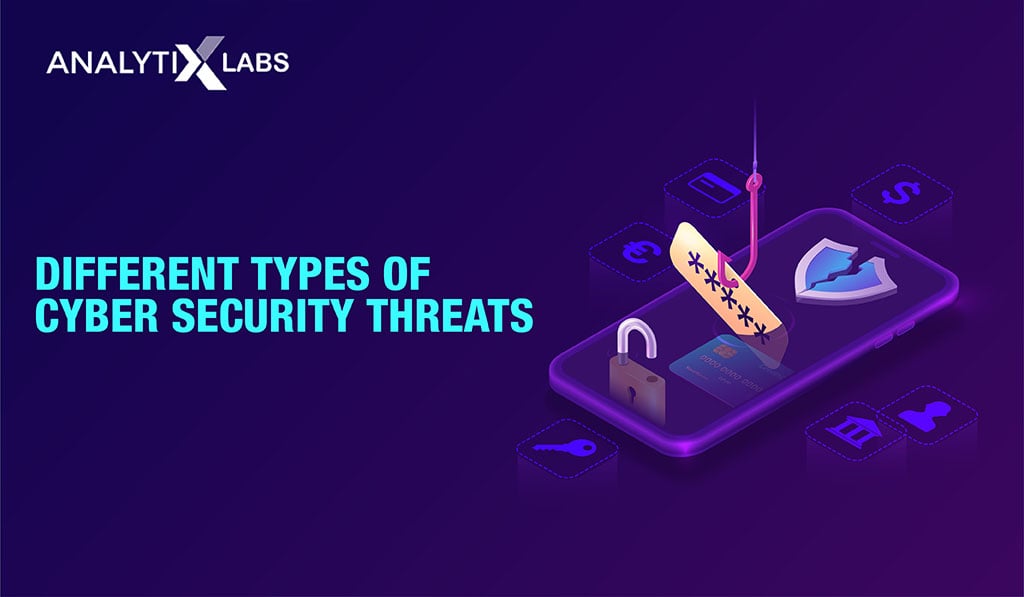
Here are the different types of cyber security threats:
- Spyware, ransomware, worms, viruses and other malware
- Destructive Trojans such as Emotet
- Denial of Service of DoS attack. Using computer networks, a distributed DoS (DDoS) attack can be carried out
- Submission of malicious code in vulnerable infrastructures or websites
- Man-in-the-middle attack or MITM
- Phishing, spear-phishing or password attacks
- Exploiting systems physically or social engineering
- Structured Query Language or SQL injections
- IoT Device or peripheral attacks
- Mobile device attacks using spyware and malware
- Data and database breaches
- Infrastructure vulnerability or loophole identification and using those to gain access
Importance of Cyber Security
The importance of cyber security is increasing on a daily basis as more data breaches are occurring every year than ever before. From preventing operational interruptions such as interrupting power or electricity in cities which could even lead to a loss in lives to preventing the loss of sensitive data, the absolute necessity of good cyber security practices has been noticed globally. Organizations and governments are now willing to invest more time, money, and resources to improve cyber security measures to decrease security risks and prevent cyberattacks.
Here are a few reasons that cyber security is important:
- Users, customers, and employees along with their data and personal information are vulnerable to getting hacked, leading to blackmail, leaks, and identity theft.
- A massive increase in cybercrimes.
- The ability to scan and detect threats or predict attacks.
- Reduction in risk and recovery cost, potentially saving millions of dollars for large corporations.
- Cloud and database protection.
- Increases credibility and reputation with stakeholders and users. Companies with good cyber security measures set in place are more trusted.
- Protection from viruses and malware.
- Data integrity and availability.
- Ensuring other applications and integrations are not compromised.
Important Applications of Cyber Security
When talking about the various applications of cyber security in real life, we, by default, always think about locking our systems when needed and using strong passwords and antiviruses. However, when talking about the applications of cyber security in companies and IT infrastructure, there are multiple security requirements that various cyber security methods serve. These requirements can range from monitoring, authentication, threat prevention, recovery, and data protection, thus requiring a holistic set of methods and frameworks to tackle every vector or source of security threats.
The important applications of cyber security are as follows:
- Access Control: In this application, authentication, authorization, and monitoring are focused upon. Here, professionals must use cyber security methodologies and frameworks to limit users and assign roles. Also, suspicious activities must be tracked and monitored extensively in order to stop unauthorized access or activities.
- Telecommunications and Network Security: Information and communication confidentially are protected. The main focus of this application is to protect data and ensure the flowing availability of data. Networks are secured and reinforced while it is made sure that telecommunications are not compromised.
- Information Security Governance and Risk Management: This application of cyber security deals with risk management, security governance, data integrity, security education, and risk analysis. Risk management has a lot to do with risk assessment and control of the damage that can be caused by these risks. Information security also deals with the integrity of sensitive information.
- Software Development Security: Identification of software defects during development and ensuring that policies are addressed and regulatory requirements are maintained. In this application, the software is heavily tested, scanned, and analyzed to find out all the flaws, loopholes, or vulnerabilities that can be taken advantage of by hackers or rival companies.
- Cryptography: Encryption of sensitive information and decryption of this information for the authorized people. Cryptography ensures that only the users who were meant to access certain data can get to see it. This also helps in reducing data leaks or breaches.
- Security Architecture and Design: Authorising integrations, services, and protocols inside the infrastructure. This application also deals with finding vulnerabilities in the current architecture and designing better IT infrastructures. It is very important to protect the security architecture as a weaker defense can easily be penetrated.
- Operations Security: Prevention of intrusion and detection of intruders. This involves penetration testing, violation analysis, system backups, employee background checks, and vulnerability scanning.
- Business Continuity and Disaster Recovery Planning: Recovery of data in case of data loss, attacks, or disasters so that businesses can keep operating. This application provides models or strategies that can help companies cope with extreme data loss by frequently backing up data and investing in a system that will allow business operations to keep running.
- Legal, Regulations, Investigations, and Compliance: The investigation of suspicious events and legal protocols. Regulation maintenance and compliance.
- Physical (Environmental) Security: Physical security protocols such as system locks, intruder detection systems, alarms, surveillance systems, and data-destruction systems for worst-case scenarios.
Challenges of Cyber Security

Here are some challenges faced by cyber security in modern times:
- Increased unlawful use of networks
- Increasing attacks on mobile devices and IoT devices
- Manipulating Artificial Intelligence systems or bypassing machine learning implementations
- Use of advanced AI by hackers
- An increase in ransomware and spyware in the market
- Not enough research is being conducted on lesser-known threats and emerging threats
- Cyber attacks can occur out of nowhere and from anywhere. Multiple sources and vectors can be used for attacks
- Phishing and spear-phishing
- Lack of education regarding cyber security and protecting devices
- Hacktivism and cyberterrorism are growing extensively
- Dronejacking and other modern methods
- Advanced social engineering
- Multiple vendors, partners, and employees have access to systems and data, thus increasing the number of sources and vectors again
Benefits of Cyber Security
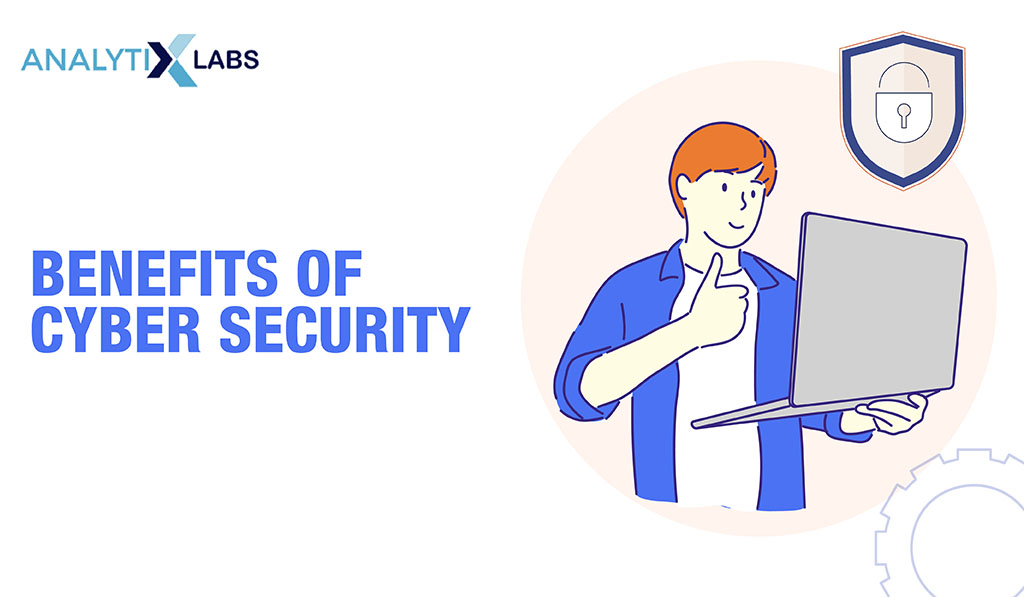
Here are the various benefits of cyber security:
- Protection against worms, malware, viruses and other infectious programs
- Data protection and prevention of information leaks
- Protection against hackers
- User, customer, and employee protection
- Protection of systems, hardware, and computers from damage
- Privacy and integrity
- Prevention of unauthorized access or unauthenticated users
- Business continuity management and faster disaster or breach recovery
- Information security and stakeholder trust
- Reputation with customers and better business credentials
- Protection of digital assets and business in general
- Protection of software, website or IT infrastructure
- A holistic solution for a diverse set of issues
FAQs- Frequently Asked Questions
Q1. What are examples of cyber security?
Antiviruses, penetration testing and installation of monitoring systems are all great examples of cyber security. Setting up multi-factor authentication methods and implementing more rigorous authorization protocols are also good cyber security practices. To learn about more cyber security examples, you can check out reputed cyber security notes or journals.
Q2. What are the 5 benefits of using cyber security?
The five benefits of using cyber security are as follows:
- Safety and privacy for end-users
- Protection against malware and viruses
- Protection against data loss and data theft
- Protection against systems getting hacked
- Protection against computers and devices from being damaged
To learn more about the various benefits of cyber security, downloading a cyber security pdf from a learning platform is recommended.
Q3. What are the features of cyber security?
The features of applications of cyber security are as follows:
- Solid analytics and analysis
- Coverage of threats and identification of threat level
- Protection against internal threats
- Regulation and compliance
- Risk management
- Threat response and prediction of attacks
- Continuous tracking and monitoring
To learn about more cyber security features, good academic cyber security notes or corporate cyber security pdf files are suggested.
Conclusion
Cyberattacks can lead to massive data loss and a huge scar on one’s reputation. It is a crucial part of protecting businesses and operations. It is also definitely one of the most upcoming careers out there. It provides you with a sense of satisfaction, knowing that you have the ability to protect corporations and data. There is also potential for immense growth in this career, especially with cyber security important in the public, private, and government sectors. Corporate, customer, and client data are in more danger than ever as breaching is becoming increasingly common through vendors, loopholes, and various support vectors.

